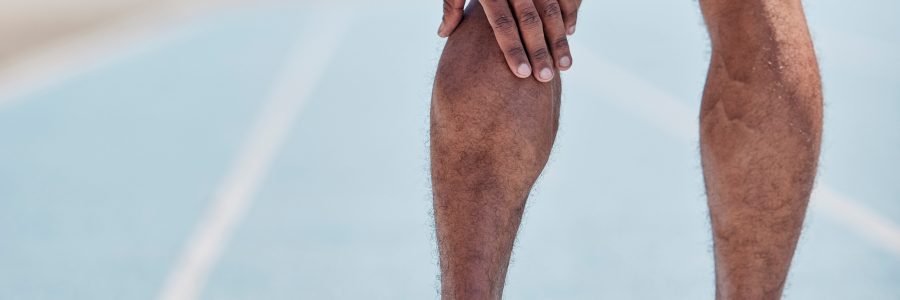Lower leg pain (gastrocnemius/calf strain)
The calf is made up of two muscles at the back of the lower leg that together form the Achilles tendon. The gastrocnemius, provides the sudden explosive drive for the initial ‘take off’ in running. It is the more commonly injured of the two muscles, especially in people in their forties. A strain refers to a tear in this large powerful muscle forming the bulk of the calf.
CAUSE
A gastrocnemius strain typically occurs when the muscle is forcibly contracted whilst in a stretched position. This can occur when accelerating from a stationary position or when lunging forward, such as in tennis or squash. A gastrocnemius strain may also occur following stepping in a pot-hole whilst running. This may cause the heel to drop suddenly, overstretching this muscle. Factors which may contribute to this type of strain include an inadequate warm up, muscle stiffness or tightness, fatigue or overuse, an inadequate recovery period between training sessions, reduced muscle strength and faulty biomechanics.
SYMPTOMS
The first sensation you feel is a sudden pain in the calf which may be associated with a stabbing or tearing sensation. In minor tears, you may be able to continue participating with minimal hindrance. However, as the muscle cools down following completion of participation the pain may gradually worsen as bleeding and swelling around the injured muscle takes place. In more severe tears, you are unable to continue participating immediately following injury due to excessive pain, and muscle tightness. In these cases, the pain may be so intense that you may be unable to walk or correctly weight-bear on the leg.
Lower leg pain (shin splints)
Shin splints refers to inflammation occurring where a tendon or muscle attaches to a bone.
CAUSE
This injury results from overuse. Tendons and muscles attach to bone via a layer of connecting tissue overlying the bone which is called the periostium. When muscles contract, they pull on their tendons, which, in turn, pull on the periostium overlying the bone. With overuse, poor biomechanics or excessive muscle tightness, this pulling can damage the preriostium. This results in an inflammatory response as the body prepares to repair the damage. Consequently, shin splints is inflammation where a tendon attaches to the bone.
SYMPTOMS
It is typically felt as pain along the inside border of the shin bone (tibia). It is usually painful as you begin exercising; however, as the area begins to warm up the pain may subside. Following exercise, the pain may gradually return as inflammation takes place. The area of tenderness may be painful to touch and you may feel bands of thickened tissue adjacent to the tibia.
Lower leg pain (Achilles tendinopathy)
Achilles tendinopathy refers to degeneration within the large tendon which joins the calf muscle to the heel bone.
CAUSE
It is a common injury in sports like running and jumping and results from overuse of the tendon. The function of the Achilles tendon is to transmit forces produced by the calf muscles to the heel bone. Repetitive use of the calf muscles and therefore by the Achilles tendon can lead to microscopic tears within the substance of the tendon. To repair these tears, the body commences an inflammatory response. Factors that may contribute to Achillles tendinopathy include a recent change in training, overtraining, poor footwear, incorrect biomechanics and decreased muscle flexibility and joint range of motion.
SYMPTOMS
It results in pain within the tendon just above where it attaches to the heel bone. This pain typically develops gradually. Initially, the tendon may only be painful after exercise. You may experience stiffness or tightness in the Achilles region. These initial signs disappear quickly with walking about or applying heat. However, as you continue to participate, the tendinopathy progresses and the pain within the tendon becomes more intense and more frequent.











